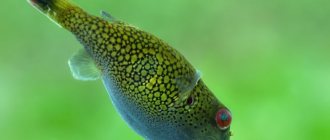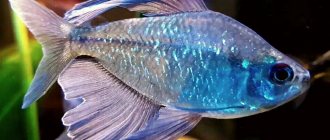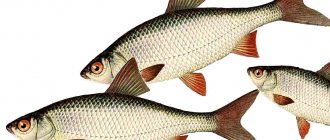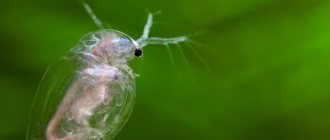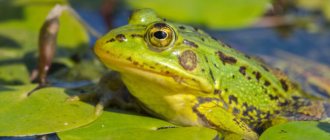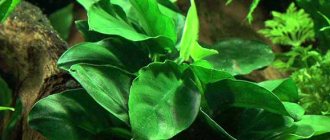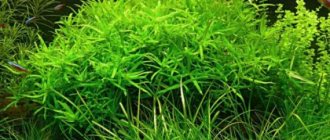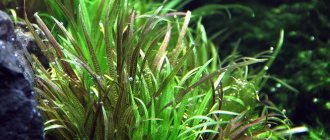- Wild animals
- >>
- Amphibians
The crested newt its name from its long crest that runs along its back and tail. These amphibians are often kept by collectors. In their natural habitat, their numbers are continuously decreasing. The animal looks like a toad or a lizard, but is neither one nor the other. They can live both on land and in water.
Origin of the species and description
Photo: Crested newt
Triturus cristatus comes from the genus Triturus and belongs to the order of caudate amphibians. The subclass unshelled belongs to the class of amphibians.
Newts belong to the following families:
- salamanders;
- salamanders;
- lungless salamanders.
Previously it was believed that the species included 4 subspecies: T. c. cristatus, T. c. dobrogicus, T. c. karelinii and T. c. carnifex. Now naturalists do not distinguish subspecies of these amphibians. The species was discovered in 1553 by the Swiss explorer K. Gesner. For the first time he called it a water lizard. The name newts was given to the genus in 1768 by the Austrian scientist I. Laurenti.
Video: Crested newt
In ancient Greek mythology, Triton was the son of Poseidon and Amphitrite. During the Great Flood, he blew the horn on his father's orders and the waves receded. In a battle with the giants, the god hollowed out a sea shell and the giants fled. Triton was depicted with the body of a man and the tails of dolphins instead of legs. Helped the Argonauts leave their lake and go out to the open sea.
Interesting fact: A representative of the genus has a unique property of regeneration. Amphibians can regenerate lost tails, paws or tails. R. Mattei made an amazing discovery in 1925 - animals can regenerate internal organs and vision even after cutting the optic nerve.
Interesting facts about the animal
- In the mythology of Ancient Greece, Triton is considered the son of Amphitrite and the god Poseidon.
- In 1925, scientists found that the amphibian can regenerate its tail, paws, and internal organs.
- The crested newt can whistle, squeak and squeak.
- The lifespan of an individual does not exceed 15 years. Its maximum age is 28 years in captivity.
- Reptiles are not afraid of the cold. They may freeze in the ice, but once it melts, the creature will come to life.
- The crested newt is the best choice for a pet if one of the apartment residents is allergic to feathers and wool. This creature does not bother its owner. It doesn't make any unnecessary sounds.
- Many people are interested in the question, how many circles of blood circulation does a newt have? There are two of them. The second circle is achieved through pulmonary breathing.
- All amphibians have indirect development. This means that an individual emerges from the egg shells, which is similar in appearance to an adult organism, but is not capable of reproduction.
- Triton is a peaceful amphibian that does not harm other aquarium inhabitants.
- An adult newt breathes through its lungs and skin.
Behavior
The crested newt usually begins its activity at the turn of March or April after the ice has melted. Depending on the latitude, this process can occur from February to May.
The animal is nocturnal and can be active all day only during the breeding season. During daylight hours, it hides in thickets of aquatic plants, and with the arrival of dusk it comes out onto land. The amphibian feels more comfortable in water than on the hard surface of the soil. It swims well, using its tail as propulsion.
The diet consists of small crustaceans, mainly ostracods (Ostracoda), snails, leeches (Hirudinea), tadpoles and insects. Adults readily eat amphibian larvae, including their own species. They often attack their smaller newts (Lissotriton vulgaris), which has led, for example, to a significant reduction in their population in Moldova.
After the end of the mating season, most amphibians move completely to land in July and August. Some males refuse to leave the pond and remain in it until September or even late autumn.
Individuals that come onto land hunt at night and during the day during the rains. Their prey is any living creature that fits into their mouths. Repeated cases of cannibalism have been recorded.
Crested newts have a developed sense of smell. They most often detect their prey by smell.
On the ground, amphibians move clumsily and with obvious difficulty, but in moments of danger they are capable of short runs. They can travel up to 1200-1500 m from the reservoir. One- and two-year-old animals are considered the best travelers. Older and more experienced brothers try to settle near the water. They use stumps, fallen trees, rock crevices, mosses, abandoned rodent holes and loose soil as shelters.
Newts hibernate in late October and early November. They overwinter under stones, a thick layer of forest litter, and the roots of trees and shrubs. They do not dig holes on their own, being content with ready-made holes. The most enterprising amphibians spend the winter in damp basements of houses. Hibernation occurs when the ambient temperature drops to zero.
For the winter, crested newts often gather in small groups, which allows them to waste less moisture. Individuals that have been in the water all summer remain there until spring, burying themselves in the silt.
A caught amphibian emits a faint squeak. It can regenerate lost organs. The ability to regenerate weakens with age. The hind limbs and tail recover most quickly.
Common newt: description
Common newts represent a fairly large class of animals called “Amphibians”. In addition, they are representatives of the genus of small newts, and they are considered the most numerous and most widespread on our Planet. The famous Swedish naturalist Carl Linnaeus was the first to notice and also describe a similar species of amphibian. This happened back in 1758. The animals got their name in honor of the god Triton, who is usually depicted sitting on the back of a dolphin and somewhat immersed in the water element.
To distinguish newt from other representatives of the amphibian class, you need to know some differences. Firstly, the newt is quite small, with body dimensions not exceeding ten centimeters, along with a tail, the length of which can reach more than half the length of the body. The body is covered with a layer of skin, which can be either smooth or rough, olive green or brown in color with numerous small dark spots. Common newts differ from their closest representatives of this class due to the presence of longitudinal stripes of a dark shade running along both sides of the newt's head.
Important point! Despite their rather small size, common newts pose a danger to many animals. The fact is that the skin of an animal is capable of secreting a deadly poison. This poison cannot harm humans, but for some animals it poses a mortal danger. The effect of the poison is that it practically deprives the blood of platelets, which leads to cardiac arrest.
This small animal is a very unpretentious creature, so aquarists often keep it at home, especially since this is not associated with any difficulties. The main task of the aquarist is to create suitable conditions for the animal, related to temperature, lighting, size of the terrarium and its contents. In such optimal conditions, a pet can delight others for 2 decades, or even more.
Appearance and features
Newts can be distinguished from other amphibians by a number of characteristic features:
- Small in size. As already mentioned, the total length of the animal including the tail does not exceed 10 cm. It should be noted that females are always smaller than males.
- According to the nature of the skin, which can be smooth (mostly) or rough, with the presence of small grains on the surface. The skin color is either brown or olive, with the belly area being lighter in color - yellow or light orange. The whole body is covered with small but numerous dark spots, and there are dark longitudinal stripes on the head.
- By the nature of the limbs. Practically, like all animals, the newt has two pairs of legs of the same length. The front legs are armed with 3-4 fingers, and the hind legs have 5 fingers. The paws of this animal are perfectly adapted to the movement of the newt in water, as well as along the bottom of the reservoir. If we talk about movement on land, then in this animal such movements look somewhat clumsy.
- By the nature of vision, which cannot be called excellent, and by the nature of smell, which is simply excellent, since adult individuals sense their potential prey hundreds of meters away.
- The teeth are conical in shape. The teeth are located in the palate and represent two parallel rows of conical teeth that diverge at a slight angle. Two rows of teeth allow the newt to securely hold prey in its mouth.
Interesting moment! In fact, these are unique animals that have the ability to restore various organs, eyes, and lost limbs, which has been confirmed by observations.
Common newt / Lissotriton vulgaris / Smooth newt
Habitat
For their life activities, newts choose mixed or deciduous forests, while they live and breed in ponds with slow flows or in reservoirs with stagnant water. On land they can be found in thickets of shrub vegetation, in park areas, in forest belts, and also in gardens. They try to avoid open areas. It is believed that newts are distributed almost everywhere where suitable habitat conditions exist for them. It should be noted that newts are not found in Crimea, the south of France, Portugal, Antarctica and Spain. The habitat of newts is associated with the characteristics of the subspecies.
There are seven subspecies of newts:
- The Greek newt is found in Greece, Macedonia, Albania and Bulgaria.
- Schmidtler's newts are found exclusively in the western regions of Turkey.
- Triton ampelous or grape. The habitat is associated with the northwestern regions of Romania. It has a characteristic low dorsal crest.
- Cossvig's newts are also found in Turkey, along the southwest coast.
- The species "Lissotriton vulgaris vulgaris" is considered the nominative and most widespread. The habitat of the species extends over very vast territories, from the territory of Ireland to the territory of western Siberia. The species is distinguished by a rather high crest on the back, as well as a pointed tip of the tail.
- The southern newt is found in Slovenia, in the territory of Italy associated with the northern regions, as well as in the south of France.
- Lanza's newts live in the southern regions of Russia, in the northern regions of Armenia, in Azerbaijan, and also in Georgia.
What does it eat?
Despite their not so impressive size, newts are considered very agile creatures. These are excellent swimmers who move along the bottom of the reservoir without any problems. Each newt hunt ends with a successful attack. They are able to catch up with potential prey in the water, which they sense hundreds of meters away. Due to the unique structure of the mouth, the victim has virtually no chance of survival if it ends up in the newt’s mouth.
Important point! Sexual dimorphism of the species is not very developed, so it is extremely difficult to distinguish a female newt from a male, especially after the end of the mating season. Despite the fact that males are slightly larger than females, these differences are difficult to discern. During the mating season, sexual differences are more pronounced, since males develop an additional ridge on their back.
The diet includes various food items, such as:
- Crustaceans.
- Larvae of insects and other invertebrates.
- Caviar of various fish.
- Tadpoles.
- Slugs and earthworms.
- Beetle larvae.
- Armored mites.
- Centipedes.
When newts are in water, they have a fairly strong appetite, since they need a lot of energy, and when they are on land, they eat quite little. When they are in water, their stomach is almost completely full, and when they are on land, their stomach is slightly more than half full of water. If newts are kept in captivity, they are fed somewhat differently and their diet consists of earthworms, bloodworms, and aquarium shrimp.
Attention should be paid to the fact that feeding newts in captivity is associated with some peculiarities. There should be no sand or small shells in the terrarium, as the animal can swallow them during feeding, which is unacceptable. The result could be quite disastrous.
Behavior and lifestyle
Adults feel great both on land, since they have lungs, and in water, since they have gills. This feature of their anatomical structure helps them survive in conditions when bodies of water dry up. In addition, their life activity is associated with two stages: winter and summer. With the onset of cold weather, the activity of such amphibians decreases significantly, and they move to land to overwinter. To do this, they prepare a shelter for themselves in advance.
An ordinary pile of fallen leaves may be suitable as a winter shelter for a newt, but an abandoned hole may be a more optimal option. They often spend the winter in a small group, which increases their chances of survival. A group can consist of several dozen individuals. As the temperature drops below zero, animals stop moving, falling into torpor.
Important fact! Newts are very useful creatures, as they destroy a huge number of mosquitoes, regardless of their stage of development.
With the arrival of spring, as soon as the ambient temperature rises several degrees above zero, newts wake up and move into bodies of water. Despite the fact that the water is still quite cold, newts feel great in such conditions. With the onset of summer heat, newts prefer to be nocturnal, since the animals do not tolerate heat well, as well as bright daylight. If a summer cold snap occurs outside, accompanied by rain, then newts can be seen during the daytime. Basically, these animals adhere to small flocks, numbering only a few adult individuals.
Reproduction and offspring
The moment of leaving winter shelters is characterized by the beginning of the mating season, and it begins from the moment the animals move into water bodies. The mating season is as unique as the animals themselves. The male tries to attract the female through a kind of dance with elements of gymnastics and a demonstration of strength, as well as his capabilities. If the female likes the male, then they will mate later.
The breeding period extends for some time, as a result of which the female lays up to seven hundred eggs, while the female tries to camouflage literally every testicle. To do this, she places it on a leaf of a plant and bends the leaf. The result is something like a small wallet, which is held in a similar position due to the stickiness of the surface layer of the egg.
The process of maturation of laid eggs lasts for a couple of weeks, after which larvae with tails emerge from the eggs, the total length of which is about 7 mm. After birth, the larva does not feed for 24 hours, since it does not even have a mouth opening yet. Moreover, the larva tries to stay in its shelter so as not to be an easy prey for many predators. On the second day, a mouth opening appears, allowing the larva to feed on its own. After a month, the larva develops full-fledged limbs, and after another couple of months the larva turns into an adult.
Interesting to know! In areas with a predominant warm climate, by autumn all larvae are completely transformed into adults. In colder climates, they do not have time to acquire a fully adult appearance by autumn, so they have to spend the winter with external gills.
Common newt 6 Newt wedding
Natural enemies
Newts are small, very useful living creatures that are unable to defend themselves against many natural enemies. Therefore, they live in nature for no more than 15 years, although they can live for about 3 decades, as evidenced by the practice of keeping them in captivity.
Interestingly, it is in water that newts have the greatest number of natural enemies. This is also due to the fact that newts spend the most active periods of their lives in the aquatic environment. Almost any animal that lives in a body of water is not averse to dining on newts.
Natural enemies of newts are:
- Kindred . Larger individuals, if possible, will easily swallow small newts. Crested newts are especially noticeable in this regard.
- Frogs . For them, newts are not difficult prey.
- Fish . Many species of fish, and not only predatory ones, eat newts.
- Snakes and vipers track down these defenseless animals and easily swallow them.
- Birds , as well as some animals that live on land, when newts appear outside the reservoir.
Of course, not all newts are so defenseless. Some subspecies have quite toxic skin. The yellow-bellied newt has so much poisonous secretion on its skin that it can kill more than 2 tens of thousands of small rodents.
Reproduction of amphibians
Crested newts begin to wake up closer to March. In preparation for the mating season, they change their color to brighter shades. Males raise their crest as high as possible, signaling to the female that they are ready for fertilization. During courtship, male representatives make characteristic sounds and mark the selected territory by pressing their cloaca to various areas. The female herself swims to the call and joins the male’s dance.
When the connection is established, the male deposits lumps of his own mucus, which contains male reproductive cells, into the water. The female, in turn, takes them into her cloaca and the process of fertilization begins in the body. Females are capable of laying up to 200 eggs, which she attaches to the back of the leaves. The entire process lasts from 2 to 8 weeks. Within a few days, the first larvae appear and starve until the mouth is developed. Then the future cubs develop gills, paws, and hind limbs. The larvae are also born predators, so at first they eat invertebrates.
Courtship ritual
As soon as the female appears, the male begins to signal her with his tail, inviting her to his area. Having discovered the marks and made sure that the male is behaving friendly, she perks up, excitedly moves her head, opens and closes her mouth, and makes sharp turns. The male sniffs her, demonstrates his tail and begins the courtship dance, which consists of special movements of the body and tail. The male circles around the female, follows her, stands upside down, then makes a strong jerk with his tail. After this, the female relentlessly follows the male, fascinated by the movements of his tail. The male newt lifts its tail up and deposits a spermatophore. The female crawls onto him, grabs him with the edges of her cloaca, and the mating act is completed. Courtship dances can take place: on the bottom, on underwater plants and in the water column.
Social structure and reproduction
Photo: Crested newt in nature
After emerging from hibernation, amphibians return to the body of water where they were born. The males arrive first. If it rains, the path will be easy; if it freezes, getting there will be difficult. The male occupies his territory and awaits the arrival of the female.
When the female is nearby, the male spreads pheromones by actively waving his tail. The gentleman performs a mating dance, trying to charm his beloved, bending his whole body, rubbing against her, lightly hitting her head with his tail. At the end of the process, the male deposits a spermatophore at the bottom, and the female picks it up with the cloaca.
Fertilization occurs inside the body. The female lays white, yellowish or yellow-green eggs approximately 5 millimeters in diameter in late spring and early summer. The eggs are curled in 2-3 pieces into the leaves of aquatic plants. After 14-18 days, the larvae appear. At first they feed on the substance from the yolk sacs, and then they hunt zooplankton.
The larvae are green, the belly and sides are golden. The tail and fin are dark spotted with a white edge. The gills are reddish. They grow up to 8 centimeters in length. Unlike closely related species, they live in the water column, and not on the bottom, so they are often eaten by predatory fish.
Interesting fact: The larvae's forelimbs are the first to grow. The hind ones take about 7-8 weeks to grow.
Larval development lasts about 3 months, after which young individuals emerge from the water onto land. When the reservoir dries out, the process accelerates, and when there is enough water, on the contrary, it lasts longer. The untransformed larvae overwinter in this form. But no more than a third of them survive until spring.
Appearance and features
Photo: Crested newt in nature
The size of adult individuals reaches 11-18 centimeters, in Europe - up to 20 centimeters. The body is spindle-shaped, the head is large and flat. They are connected by a short neck. The tail is flattened. Its length is approximately equal to the length of the body. The limbs are identical and well developed. There are 3-4 thin toes on the front paws, and 5 on the hind paws.
The larvae breathe through their gills. Adult amphibians breathe through their skin and lungs, which are transformed into gills. With the help of a leathery lining on the tail, amphibians obtain oxygen from water. If animals choose a terrestrial lifestyle, it disappears as unnecessary. Newts may squeak, squeak, or whistle.
Interesting fact: Although amphibians have very poor vision, their sense of smell is excellent: crested newts can smell prey at a distance of 200-300 meters.
The species differs from the ordinary newt in the absence of a black longitudinal stripe between the eyes. The upper part of the body is dark with barely noticeable spots. The belly is yellow or orange. There are many clusters of white dots on the cheeks and sides. The throat is dark, sometimes yellowish, with white speckles. The teeth run in two parallel rows. The structure of the jaws allows you to firmly hold the victim.
The skin, depending on the type, can be smooth or bumpy. It feels rough to the touch. On the belly there is usually no pronounced relief, on the back it is coarse-grained. Color depends not only on the species, but also on the habitat. These factors influence the shape and size of the male's dorsal crest, which grows for the mating season.
The height of the crest can reach one and a half centimeters, and the isthmus at the tail has a pronounced isthmus. The most serrated part, extending from the head to the base of the tail. The tail part is slightly pronounced. In normal times, the crest of males is practically invisible.
Notes[ | ]
- Kuzmin S. L. Amphibians of the former USSR. - M.: Partnership of Scientific Publications KMK, 2012. - 2nd ed. - P. 95. - 370 p. — ISBN 978-5-87317-871-1
- Ananyeva N. B., Borkin L. Ya., Darevsky I. S., Orlov N. L.
Five-language dictionary of animal names. Amphibians and reptiles. Latin, Russian, English, German, French. / under the general editorship of academician. V. E. Sokolova. - M.: Rus. lang., 1988. - P. 33. - 10,500 copies. — ISBN 5-200-00232-X. - Description and range (inaccessible link) (English) on the Global Amphibian Assessment website
- Description of the species Triturus cristatus on the website of the Institute of Ecology and Evolution named after A. N. Severtsov
- Description of the species on the website bbc.co.uk (English)
- Article by E. A. Dunaev “Meet the newts of the Moscow region” Archival copy dated February 17, 2011 on the Wayback Machine on the website of the Biology Newspaper of the First of September Publishing House
- R. Matthey.
Récupération de la vue après résection des nerfs optiques chez le Triton (French) // Comptes rendus des séances de la Société de biologie et de ses filiales : magazine. - 1925. - Vol. 93. - P. 904-906. - Archived copy (unspecified)
(inaccessible link). Access date: December 13, 2007. Archived November 9, 2007. (English)
Spreading
Its habitat covers most of the European continent and the western regions of Asia. In the north it reaches Norway, Sweden and Finland, and in the west it reaches France and Great Britain.
The species is widespread in the countries of Central and Eastern Europe. In the south, the boundaries of the range pass through Serbia, Romania, Hungary, Moldova and Ukraine. In Russia, Tristatus cristatus is found mainly in the western part of the country up to Kazakhstan and partly in the Kurgan region in Southwestern Siberia.
The amphibian prefers to settle in lowlands. In mountainous areas it is observed at altitudes up to 700-850 m above sea level.
Today, taxonomists distinguish 4 subspecies based on the color, size and proportions of individual body parts. The most widespread is the nominate subspecies, covering the territory from France to the Urals and from Scandinavia to the Black Sea. It is characterized by an abundance of light spots on the sides and dark spots on the belly.
In Scandinavia, completely black individuals are often found.
The subspecies Tc carnifex is distributed in Italy, Austria, Serbia and Montenegro. It is characterized by a smoother skin and large gray spots on the abdomen. In females, a yellow stripe is often visible near the spine.
The subspecies Tc dobrogicus is found in the plain and Danube Delta. It is distinguished by its smallest size in comparison with its closest relatives. It has rough skin that is brown or reddish in color. On the ventral part of the body there are darkish spots in two rows.
Tc karelinii lives on the Balkan Peninsula and southwestern Russia. It is characterized by smooth skin and slight spotting with a bluish tint.
Habitats
The common newt is distributed from England to Altai, from the Tyumen to the south of the Saratov region. It is not found only in Crimea, the south of France, Spain and Portugal.
It lives in deciduous and mixed forests, in shrubs, in protective forest belts, as well as in parks and gardens. Avoids open areas: large fields, meadows, etc. In the spring, during the breeding season, the newt lives in stagnant or low-flow temporary and permanent reservoirs.
What does the crested newt eat?
Photo: Crested newt from the Red Book
The diet is different from that on land.
In water, amphibians eat:
- water beetles;
- shellfish;
- small crustaceans;
- mosquito larvae;
- water lovers;
- dragonflies;
- twirlers;
- water bugs.
On land, meals occur less often and in smaller quantities.
Mostly this:
- earthworms;
- insects and larvae;
- slugs;
- empty acorns.
Poor eyesight does not allow it to catch agile animals, so the newt often goes hungry. The lateral line organs help catch amphipods that swim up to the amphibian’s muzzle at a distance of one centimeter. Newts hunt for fish eggs and tadpoles. Mollusks make up about 60% of the diet of amphibians, insect larvae - up to 40%.
On land, earthworms make up up to 60% of the diet, slugs 10-20%, insects and their larvae - 20-40%, small individuals of other species - 5%. In home breeding conditions, adults are fed house or banana crickets, mealworms or earthworms, cockroaches, mollusks and other insects. In the water, the creatures are given snails, bloodworms, and tubifex worms.
Attacks on individuals of their own species, but of smaller sizes, in some areas led to a decrease in the population. On land, amphibians hunt mainly at night or during the day in rainy weather. They catch everything that comes close and fits into their mouths.
Only hatched larvae feed on zooplankton. As they grow older they move on to larger prey. At the larval stage, newts feed on gastropods, caddisflies, spiders, cladocerans, elasmobranchs, and copepods. The creatures' appetite is quite good; they often attack victims larger than their size.
Now you know what to feed your crested newt. Let's see how he lives in the wild.
Nutrition
Newts are one of the species of animals that hibernate in winter. They can burrow into moss, settle into the burrows of other animals, or hide in gravel and rough vegetation. Hibernation can take place alone or in a small group.
The crested newt is a predator, therefore it eats beetles, larvae, slugs, crustaceans, eggs and tadpoles. The water lizard will also not refuse to feast on earthworms, cockroaches and tubifex worms.
Crested newt having lunch
Natural enemies of crested newts
Photo: Female crested newt
The amphibian's skin secretes mucus and a toxic substance that can infect another animal.
But despite this, newt has many natural enemies:
- green frogs;
- vipers;
- snakes;
- some fish;
- herons;
- storks and other birds.
Sometimes a marsh turtle or a black stork can encroach on the life of an amphibian. Many aquatic predators are not averse to feasting on larvae - some species of fish, amphibians, and invertebrates. Cannibalism is common in captivity. Some populations are greatly affected by introduced fish.
Along with food, parasites that cause pneumonia can enter the animal’s body. Among them: Batrachotaenia karpathica, Cosmocerca longicauda, Halipegus ovocaudatus, Opisthioglyphe ranae, Pleurogenes claviger, Chabaudgolvania terdentatum, Hedruris androphora.
When kept at home, crested newts are susceptible to many diseases. The most common diseases are related to the digestive system. Problems are associated with improper feeding or soil getting into the stomach.
Aquarium specimens often suffer from fungal diseases that affect the skin. The most common problem is Mucorosis. The most common disease is sepsis. This occurs as a result of microbes entering the body. Improper nutrition can lead to the accumulation of fluid in the tissues - dropsy.
Lifestyle[ | ]
Crested newt, larval stage
Newts spend spring and the first half of summer in bodies of water - lakes, oxbow lakes, river creeks, swamps, ponds, sometimes in ditches and pits with water. Avoid polluted water bodies and human activities. In the second half of summer, newts live on land, in the forest.
In water bodies they are active during the day, on land - mainly at dusk and at night; during the day they hide in soil voids, under fallen tree trunks, in rotten stumps, and sometimes in mole holes. This is where they often spend the winter, but in some cases they can spend the winter in reservoirs.
Population and species status
Photo: Crested newt in water
High sensitivity to water quality is a major factor in the decline in crested newt abundance. The population of this species is declining faster than other amphibians. For T. cristatus, the greatest danger is posed by industrial pollution and drainage of water bodies.
In many areas where amphibians were considered a common species about twenty years ago, they cannot be found now. The crested newt is considered one of the most rapidly disappearing species in the European fauna. Despite its wide range, the species is not at all numerous, especially in the north and east of its usual habitats.
Individuals are scattered mosaically throughout their range and are several times less common than the common newt. In comparison, the comb is considered a background species. Although the crested newt is 5 times smaller in number than the common one, in broad-leaved forests the populations are approximately equal, and in some places even exceed the common species.
Due to massive habitat destruction since the 1940s, the population in Europe has been greatly reduced. The population density is 1.6-4.5 individuals per hectare of land. In places frequently visited by people, there is a tendency to almost completely disappear from large populated areas.
An increase in the road network, the introduction of predatory fish (in particular, sleeper sleeper), destruction by people, urbanization of territories and catching for terrariums negatively affect the number of creatures. Negative factors include the digging activity of wild boars.
Distribution[ | ]
The range of the crested newt covers the UK (excluding Ireland), most of Europe - northern France and Switzerland, Germany, Poland, Belarus, most of Ukraine, the northwestern regions of Russia to the Urals, the southern border runs along the Alps, through Romania and Moldova along the coast Black Sea. From the north, the range is limited to the southern part of Sweden and Finland[3].
Currently, there are no subspecies of the crested newt. Some species that are currently classified as distinct are the gray-spotted newt ( Triturus carnifex
), Danube newt (
Triturus dobrogicus
), Karelin's newt (
Triturus karelinii
), were previously considered subspecies of the crested newt[4].
Crested newt conservation
Photo: Crested newt from the Red Book
The species is listed in the International Red Book, the Red Book of Latvia, Lithuania, and Tatarstan. Protected by the Berne Convention (II Annex). Although it is not listed in the Red Book of Russia, as it is generally considered not endangered, the species is included in the Red Books of 25 regions of Russia. Among them are Orenburg, Moscow, Ulyanovsk, the Republic of Bashkortostan and others.
Currently, no special protection measures are applied. The animals live in 13 nature reserves in Russia, in particular Zhigulevsky and other reserves. A disturbance in the chemical composition of water can lead to the complete disappearance of amphibians. Therefore, restrictions on agricultural and forestry activities are recommended.
To preserve the species, it is necessary to carry out work to find stable local groups and introduce a protective regime in such zones, focus on preserving water bodies, and introduce a ban on trade in crested newts. The species is included in the list of rare animals of the Saratov region and is recommended for inclusion in the Red Book of this region.
In large populated areas, it is recommended to restore aquatic ecosystems, replace decorated artificial banks with natural vegetation for comfortable reproduction of creatures, and stop the discharge of untreated stormwater into small rivers with oxbow lakes.
The crested newt and its larvae are engaged in the destruction of mosquitoes, which is of great benefit to humans. Amphibians also eat carriers of various diseases. With proper care, you can not only decorate your aquarium with a pair of crested newts, but also successfully reproduce them. Babies need constant food, vegetation and artificial shelters.
AQUARIUM PRAWNS: CARE, REPRODUCTION, COMPATIBILITY, PHOTO, TYPES, DESCRIPTION
BLACK NEOCARIDINA HETEROPODA VAR. BLACK
GREEN SHRIMP NEOCARIDINA HETEROPODA GREEN JADE
Keeping at home
If you really want, you can get a pair of crested newts and start breeding them. It is necessary to take care of the vegetation in the aquarium, constant nutrition and artificial cover in advance.
A reptile needs a special terrarium with a minimum volume of 20 liters. It must be equipped with a lamp and heating. It is necessary to maintain a temperature of about 20 degrees during the day. It is important to consider a landscape that matches the natural habitat conditions and a small body of water.
At home, the creature feeds on insects and worms. Fatty foods or regular foods should not be given to your pet. It is important to promptly dispose of any remaining food in the aquarium.

